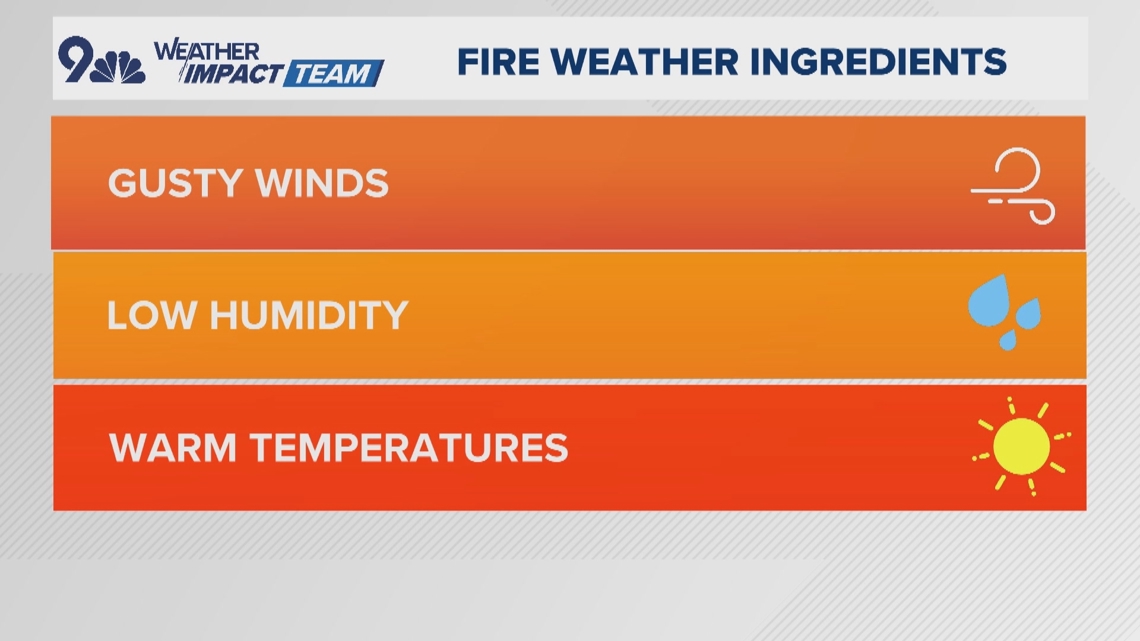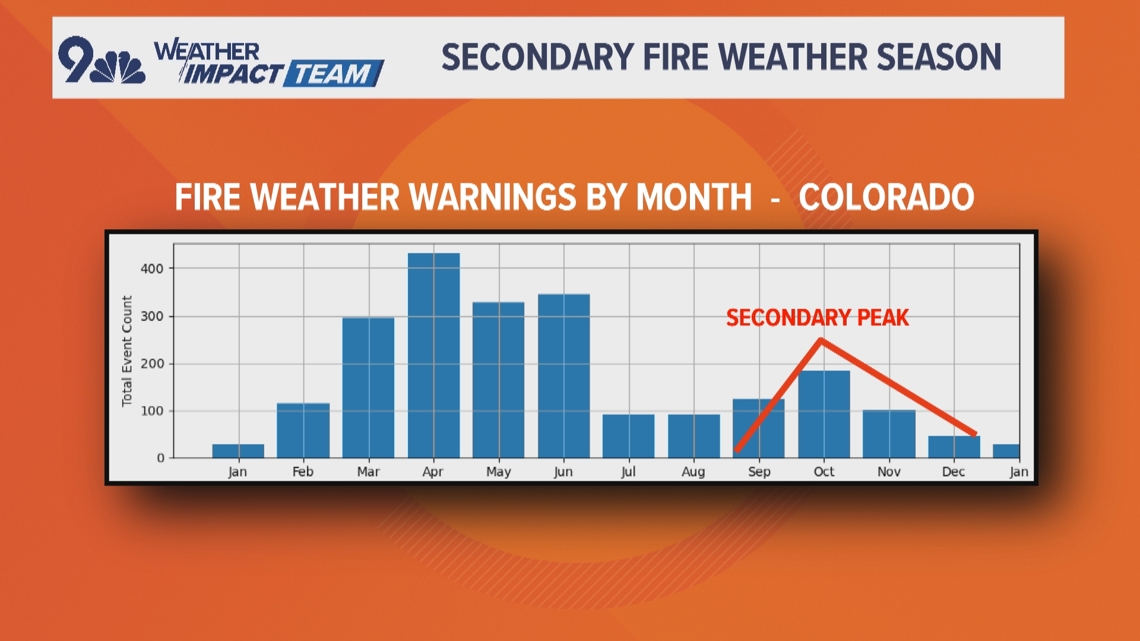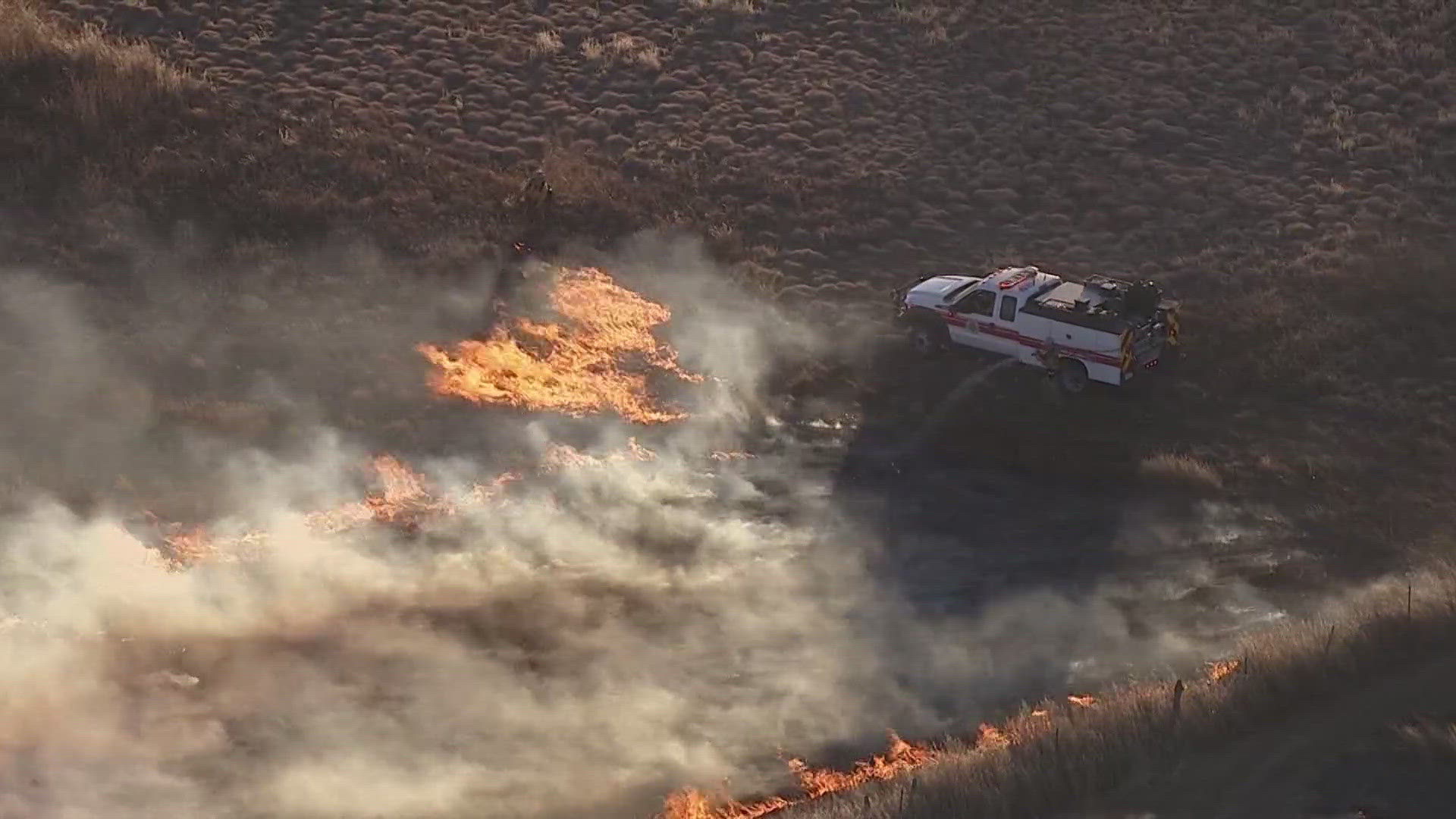DENVER — Fire weather is a combination of weather conditions that makes fire starts more likely and allows for faster fire spread. Gusty winds, low humidity and warm temperatures are the contributing factors.
Wednesday was already the second day in early October with Fire Weather Warnings, also known as Red Flag Warnings in place. And the data show that October is the peak of a secondary fire weather season in Colorado.


The blustery fall winds start to increase as the jet stream sags to the south in October and more frequent cold fronts sweep through the area. Southerly winds also become less common beginning in October which lowers the humidity in the air.


There is another factor that leads to a spike in fire weather. The grasses start to die or cure in October. Prairies and urban grasslands become very susceptible to fast-moving wildfires at this time, along with the ground cover in forested areas.
That combination of dead grass, stronger winds and low humidity lasts well into the winter, but the number of fire weather warnings gradually decreases after October because of more frequent snow cover.
The Marshall Fire in December 2021 is a good example of what can happen when elevated fire weather meets a long stretch with little to no precipitation.

